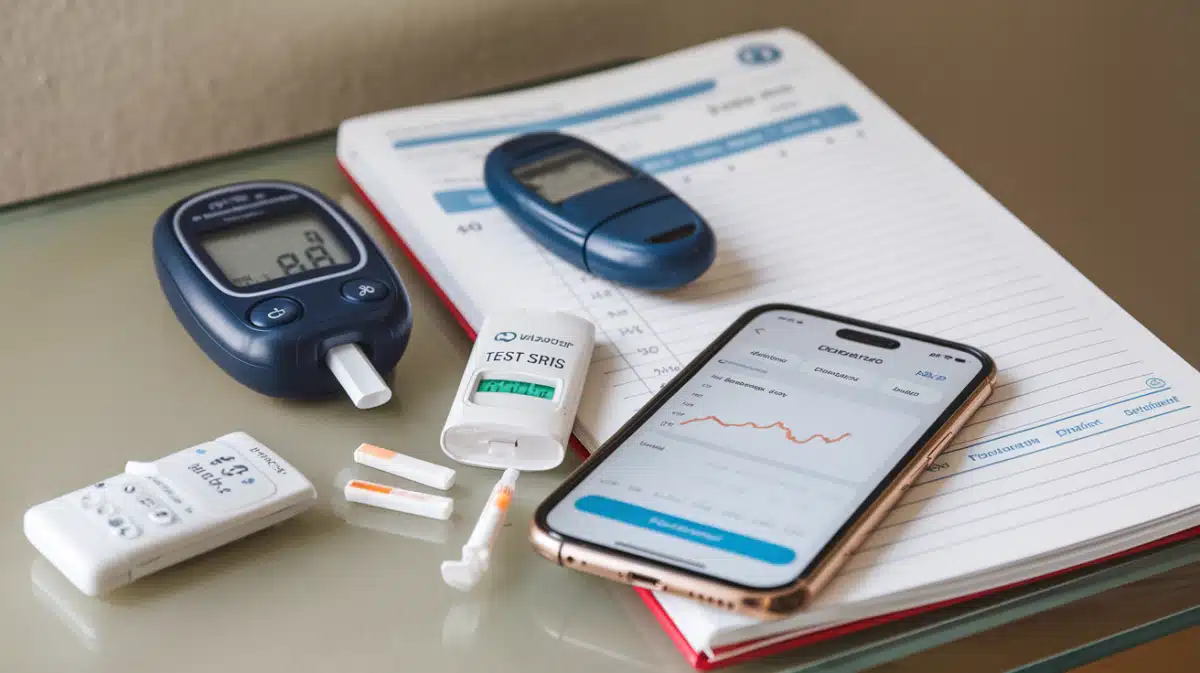Listen below:
Do you struggle with effectively managing your diabetes? A crucial tool in diabetes management is a glucose blood meter, but choosing the right one can be overwhelming. With so many options available in the market, it’s important to select a meter that suits your needs and lifestyle. In this comprehensive guide, we will walk you through the process of choosing the perfect glucose blood meter for effective diabetes management.
Living with diabetes can sometimes be challenging, but finding the right glucose blood meter doesn’t have to be. At Smiles Med Supply, we understand the importance of selecting a meter that helps you stay on top of your diabetes management. That’s why we have crafted this ultimate guide to assist you in making an informed decision. Follow our step-by-step process and discover the meter that best fits your needs, providing accurate results and essential features.
When it comes to managing your diabetes, selecting a reliable glucose blood meter is crucial. With our ultimate guide, you’ll gain valuable insights into which meter will work best for you. We will provide you with detailed information and tips to ensure that you make an educated decision in choosing the right meter for effective diabetes management. Don’t let the overwhelming array of options confuse you, let us help you find the perfect glucose blood meter for your needs.
Understanding the Importance of Glucose Blood Meters in Diabetes Management
Managing diabetes effectively requires a proactive approach that includes regular monitoring of blood glucose levels. Glucose blood meters play a pivotal role in this process, allowing individuals to track their blood sugar levels accurately and make informed decisions regarding their diet, exercise, and medication. These meters provide immediate feedback, which is crucial for preventing both hyperglycemia and hypoglycemia. By understanding the fluctuations in blood glucose levels, individuals can better manage their condition and maintain optimal health.
The importance of glucose blood meters extends beyond mere numbers; they empower patients to take an active role in their diabetes management. Regular monitoring facilitates better communication with healthcare providers, enabling them to adjust treatment plans based on real-time data. Moreover, these devices help individuals identify patterns in their blood sugar levels, which can be influenced by various factors such as food intake, physical activity, stress, and illness. This level of insight is essential for making informed lifestyle choices and ensuring long-term health.
In essence, glucose blood meters are not just tools; they are lifelines for those living with diabetes. By providing crucial information about blood sugar levels, these devices help prevent complications associated with diabetes, such as cardiovascular diseases, nerve damage, and kidney issues. Ultimately, the right glucose blood meter can significantly enhance the quality of life for individuals managing diabetes, making it a vital component of their health toolkit.
Different Types of Glucose Blood Meters Available
When it comes to glucose blood meters, there are several types available, each designed to meet different needs and preferences. The most common type is the traditional fingerstick meter, which requires a small blood sample taken from a fingertip. These meters are widely used due to their accuracy and reliability. They typically come with a lancing device that helps minimize discomfort when obtaining the blood sample. Fingerstick meters are portable and easy to use, making them a popular choice for daily monitoring.
In recent years, continuous glucose monitoring (CGM) systems have gained popularity among those with diabetes. Unlike traditional meters, CGMs provide real-time blood glucose readings through a small sensor placed under the skin. This technology allows users to track their glucose levels continuously and receive alerts when their levels are too high or low. CGMs are particularly beneficial for individuals who experience frequent fluctuations in blood sugar or have difficulty recognizing symptoms of hypoglycemia. While they tend to be more expensive than traditional meters, the convenience and comprehensive data they provide can be invaluable for effective diabetes management.
Another emerging option is the smart glucose meter, which connects to smartphones or other devices via Bluetooth. These meters often come with companion apps that allow users to log their readings, track trends, and share data with healthcare providers. Smart meters can provide insights into factors affecting blood sugar levels and help users make informed decisions about their health. The integration of technology into diabetes management has made it easier than ever for individuals to stay on top of their glucose monitoring and take charge of their health.
Factors to Consider When Choosing a Glucose Blood Meter
Selecting the right glucose blood meter involves considering several important factors to ensure it meets your specific needs. One of the primary considerations is the accuracy of the device. Different meters may have varying degrees of accuracy, which can impact your diabetes management. It is advisable to look for meters that have been clinically validated and approved by regulatory bodies. Reading user reviews and consulting healthcare professionals can also provide insights into the reliability of specific models.
Another crucial factor to consider is the ease of use of the glucose blood meter. Some meters feature large, easy-to-read displays, while others may have more complex interfaces. If you have vision or dexterity issues, look for a meter that offers user-friendly features such as voice output, large buttons, or automatic coding. Additionally, consider how easy it is to obtain a blood sample. Some meters require a larger blood volume than others, which may be a consideration for those who prefer less invasive options.
Cost is also an essential factor in choosing a glucose blood meter. While some meters are relatively affordable, others, particularly CGMs and smart meters, can be more expensive upfront. It’s important to evaluate the ongoing costs as well, such as the price of test strips, lancets, and sensor replacements. Checking with your insurance provider about coverage for specific meters is also advisable, as this can significantly affect your overall expenses. Balancing features, accuracy, and cost will help you find a meter that aligns with your lifestyle and budget.
Accuracy and Reliability of Glucose Blood Meters
Accuracy and reliability are paramount when it comes to glucose blood meters, as these factors directly influence diabetes management. An inaccurate reading can lead to inappropriate treatment decisions, potentially resulting in dangerous blood sugar levels. To ensure that you choose a reliable meter, look for devices that have undergone rigorous testing and have received approvals from health authorities. Many manufacturers provide information about their meter’s accuracy and the methods used for validation, which can help you make an informed decision.
In general, blood glucose meters are expected to have an accuracy within a certain range established by regulatory bodies. The International Organization for Standardization (ISO) has set standards that glucose meters must meet to ensure they provide reliable results. Look for meters that comply with these standards, as they are more likely to produce consistent and trustworthy readings. Additionally, consider the meter’s performance in real-world conditions, as factors such as temperature, humidity, and user technique can affect accuracy.
It is also essential to regularly calibrate your glucose meter as recommended by the manufacturer. This process helps maintain accuracy over time, especially if you notice discrepancies in your readings. Keeping your meter clean and storing it correctly can also enhance its reliability. By prioritizing accuracy and reliability in your choice of glucose blood meter, you can ensure that you are equipped with a tool that supports effective diabetes management.
Ease of Use and Accessibility Features of Glucose Blood Meters
Ease of use is a crucial factor when selecting a glucose blood meter, especially for individuals who may have vision impairments, dexterity issues, or other challenges that affect their ability to perform blood glucose monitoring. Many modern meters are designed with user-friendly features such as large screens, simple navigation, and clear instructions. Some devices even offer voice output, making them accessible for those with visual impairments. When choosing a meter, consider how easy it is to read the display and operate the buttons.
Moreover, the blood sampling process can greatly impact the overall ease of use. Some meters require a small blood sample, while others need a larger drop. Devices that minimize pain and discomfort during blood collection are often preferred. Look for meters that come with advanced lancing devices that offer adjustable depth settings and various lancet options. Additionally, features such as automatic coding can simplify the testing process, reducing the time and effort needed for monitoring.
Accessibility features are particularly important for elderly individuals or those with disabilities. Some glucose meters are designed with ergonomic grips, making them easier to hold and use. Consider features such as backlighting for displays, which can be beneficial in low-light conditions, and the availability of companion apps that help track and log glucose readings. By prioritizing ease of use and accessibility, you can select a glucose blood meter that fits seamlessly into your daily routine and enhances your diabetes management.
Additional Features to Consider in a Glucose Blood Meter
While accuracy and ease of use are paramount, additional features can enhance your experience with a glucose blood meter and support your diabetes management goals. One such feature is the ability to store and analyze data over time. Many modern meters come equipped with memory functions that allow you to save previous readings, providing insights into trends and patterns in your blood glucose levels. This data can be invaluable for making informed decisions about diet, exercise, and medication.
Some glucose meters offer advanced features such as reminders for testing times, alerts for high or low blood sugar levels, and the ability to log carbohydrate intake and insulin doses. These functionalities can help you stay organized and proactive in your diabetes management. Additionally, consider whether the meter can connect to smartphone apps or cloud-based services for easy data sharing with healthcare providers. This connectivity can facilitate better communication and collaboration in managing your condition.
Another feature worth considering is the meter’s battery life and power source. Some devices use replaceable batteries, while others are rechargeable. Opting for a meter with a long battery life can be convenient, especially for those who travel frequently or lead busy lifestyles. Finally, think about the size and portability of the meter. A compact and lightweight design can make it easier to carry the device with you, ensuring you have access to your blood glucose readings whenever necessary.
Cost and Insurance Coverage for Glucose Blood Meters
Cost is a significant factor in choosing a glucose blood meter, as prices can vary widely among different models. While some basic meters are available at a low upfront cost, more advanced devices, such as continuous glucose monitors and smart meters, can be considerably more expensive. It’s essential to evaluate not only the initial purchase price of the meter but also the ongoing costs associated with test strips, lancets, and other accessories necessary for regular monitoring.
Insurance coverage can greatly influence the total cost of owning a glucose blood meter. Before making a purchase, contact your insurance provider to inquire about coverage for specific meters and supplies. Many insurance plans offer some reimbursement for diabetes management tools, which can significantly reduce your out-of-pocket expenses. Additionally, some manufacturers have patient assistance programs that can help offset costs for those who qualify.
When comparing costs, it’s also important to factor in the long-term value of the meter. A more expensive device that provides greater accuracy, additional features, and lower ongoing costs may ultimately be a better investment than a cheaper meter that requires frequent replacement of test strips or has lower reliability. Take the time to research different models, read reviews, and consider the overall cost of ownership to make a well-informed decision that aligns with your budget.
Reviews and Recommendations for Top Glucose Blood Meters
With numerous glucose blood meters available on the market, finding the right one can be daunting. To assist in your decision-making process, it’s beneficial to look at reviews and recommendations from both users and healthcare professionals. Many medical websites and diabetes organizations provide thorough evaluations of various glucose meters, highlighting their features, accuracy, and ease of use. These reviews often include comparisons between different models, helping you identify which meters stand out in terms of performance and user satisfaction.
Another valuable resource for finding the right glucose blood meter is online communities and forums where individuals with diabetes share their experiences. These discussions can offer real-world insights into how specific meters perform in everyday situations. Pay attention to common themes in reviews, such as ease of use, accuracy, and customer support from manufacturers. Additionally, consider seeking recommendations from your healthcare provider, as they may have insights into which meters work best for their patients.
Some of the top glucose meters currently recommended by users and healthcare professionals include the Accu-Chek Guide, OneTouch Verio Flex, and FreeStyle Libre. Each of these meters has unique features that cater to various user preferences, such as data tracking, connectivity options, and ease of use. Reviewing these recommendations can guide you in selecting a glucose blood meter that aligns with your needs and enhances your diabetes management.
Maintenance and Care Tips for Glucose Blood Meters
Proper maintenance and care of your glucose blood meter are essential for ensuring its accuracy and longevity. Start by keeping the device clean and free from dirt and moisture. Wipe the meter’s exterior regularly with a soft, dry cloth, and avoid using harsh chemicals that could damage the device. Pay special attention to the test strip port, as this area can accumulate debris over time. Consulting the manufacturer’s instructions for cleaning and maintenance is always advisable to ensure you are following the best practices.
Additionally, it’s crucial to store your glucose meter in a cool, dry place when not in use. Extreme temperatures can affect the accuracy of the device and the performance of test strips. Ensure that your meter is kept away from direct sunlight and humidity, which can damage sensitive components. If your meter has a rechargeable battery, follow the manufacturer’s recommendations for charging to prevent overcharging or damage to the battery.
Regularly calibrating your glucose meter, as instructed by the manufacturer, is another essential maintenance step. Calibration ensures that your meter is providing accurate readings and helps identify any discrepancies. If you notice unusual readings or inconsistencies, it may be time to replace the device or seek assistance from customer support. By following these maintenance tips, you can maximize the lifespan and effectiveness of your glucose blood meter, ensuring reliable diabetes management.
Conclusion and Final Thoughts on Choosing the Right Glucose Blood Meter
Choosing the right glucose blood meter is a critical step in effective diabetes management. With a plethora of options available, it’s important to consider factors such as accuracy, ease of use, additional features, cost, and insurance coverage. By understanding your personal needs and preferences, you can make a more informed decision that aligns with your lifestyle and diabetes management goals.
As you embark on this journey, remember that the right glucose blood meter is not just a tool; it can enhance your overall diabetes management experience. Whether you opt for a traditional meter, a continuous monitoring system, or a smart device, the goal remains the same: to empower you to take control of your health. Engage with reviews, seek recommendations, and consult with healthcare professionals to find a meter that suits your unique situation.
Ultimately, effective diabetes management is a collaborative effort that involves regular monitoring, healthy lifestyle choices, and open communication with your healthcare team. By choosing the right glucose blood meter, you are taking a proactive step towards maintaining your health and well-being. Embrace the technology available to you, and let it support your journey towards a healthier, more balanced life.


